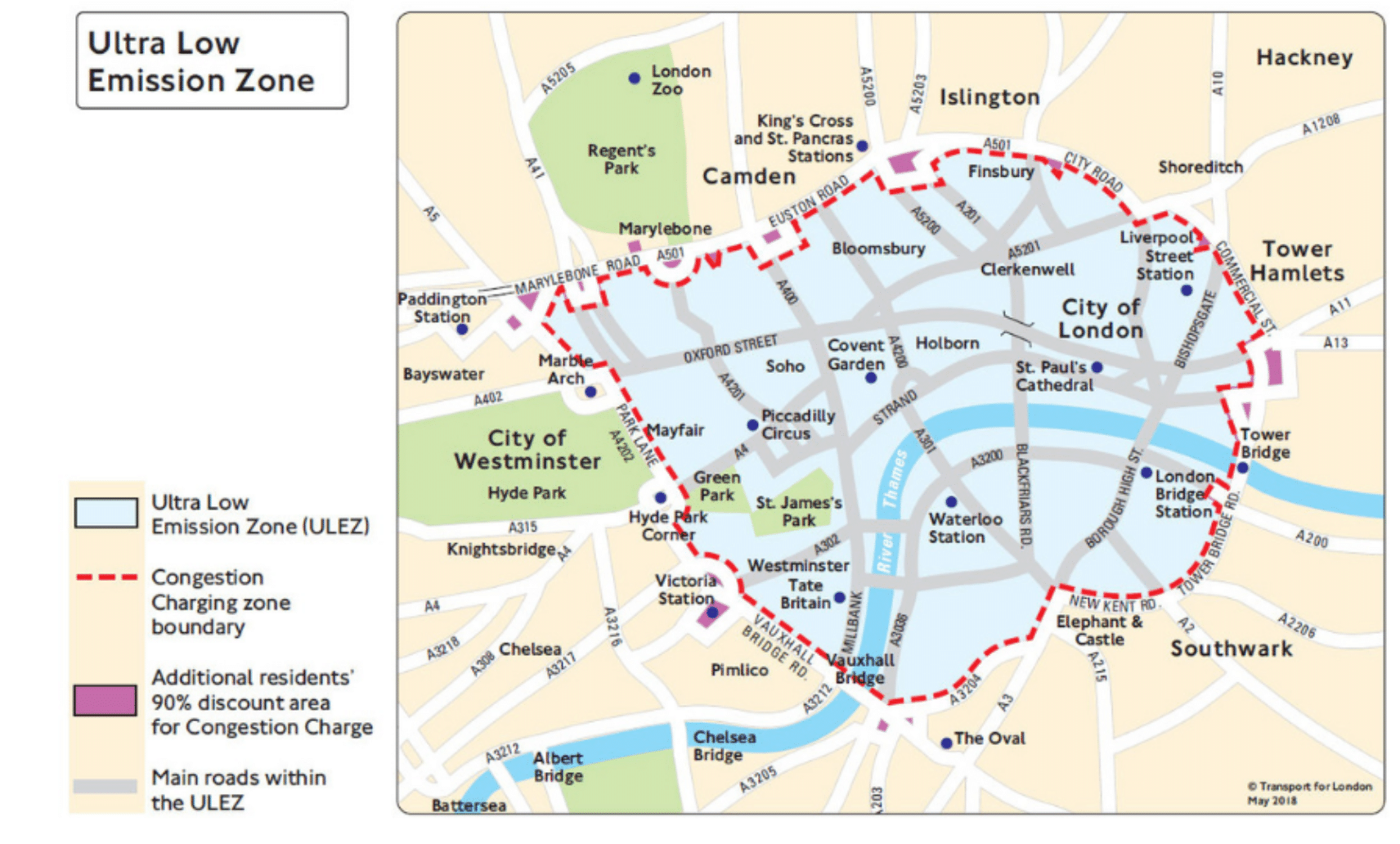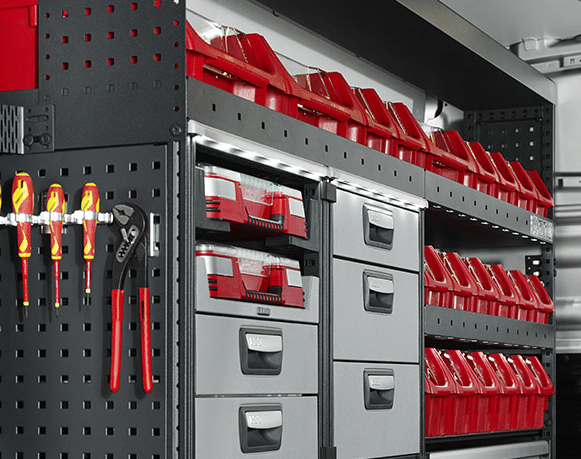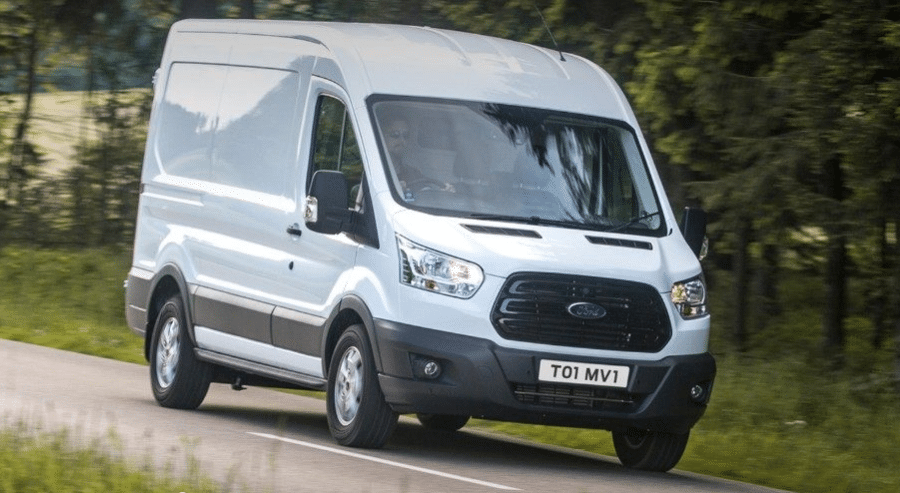London’s ULEZ charge 2019 – a van driver’s guide

Since 2008, drivers navigating London have been subject to the Low Emission Zone – an anti-pollution scheme designed to reduce the number of harmful emissions by levying a charge on vehicles that do not meet certain environmental standards. And for many drivers of older vans, this policy has meant having to fork out a small fortune on adaptations for their vehicles – or simply paying the charge.
But with fees sometimes reaching as much as £200 for a single day, this scheme has been prohibitively expensive for many drivers. And now, an even stricter Ultra-Low Emission Zone – or ULEZ – is fast approaching. But what is this new scheme all about, and how can drivers tackle it in the most economical way?
Do you have to pay the low emissions charge?
Up until now, the LEZ charges have only applied to larger vans, minibusses, lorries and coaches that do not meet certain emissions standards set by the European Union. However, as of April 8, 2019, a new scheme will be in place – and this time, many more drivers will be affected.
After this date, smaller vehicles such as LCVs and cars will also need to meet strict emission standards. And if they don’t, drivers will be expected to pay a fee for each day that they spend driving within the ULEZ area. Moreover, while the LEZ covered most of the Greater London district, the ULEZ will be extended to include the entire inner London area – meaning that even more drivers will be affected.
So if you drive a van in the ULEZ area, what will these changes mean for you? Apparently, a lot depends on whether you own a petrol or a diesel vehicle. For petrol vans, the new requirement will be to meet Euro 4 standards – a limit set in January 2005. For reference, this means that all petrol vans registered with the DVLA after January 2006 will meet these requirements.
For diesel vehicles, however, the limits are more strict. Apparently, these will be required to meet Euro 6 standards – a target that did not come into play until September 2016. So if you bought your diesel van before this date, you might well find that your emissions levels are not up to scratch.
In fact, the limits for diesel engines have altered drastically under the new ULEZ conditions. Specifically aiming to reduce the amount of toxic nitrogen oxide emitted by diesel vehicles, the Euro 6 has slashed the permitted level by a staggering 55%. In response, van manufacturers have been forced to develop new technology such as Exhaust Gas Recirculation systems, Diesel Particulate Filters and Selective Catalytic Reduction methods in order to cut down on dangerous emissions – and ensure that there is still a viable market for their vehicles.
How much is the ULEZ charge?
So what happens if your van does not meet ULEZ standards? Unfortunately, the outcome could be rather expensive. In fact, the fee for driving a vehicle that exceeds acceptable emission levels starts at £12.50 a day. Moreover, drivers could be subject to a penalty charge of £160. On top of that, the standard congestion charges and LEZ fees still apply – making driving to, from and through London a very expensive habit indeed.
Furthermore, it’s not only London drivers who will be affected by the new ULEZ scheme. In fact, if your vehicle is not ULEZ-compliant, you will find its value on the second hand market greatly reduced – even if you’re selling far away from the capital. Of course, the reason for this is simple – by selling a van that cannot be driven inside London without incurring a prohibitively expensive charge, you are putting a huge limit on the market of potential purchasers. And as a result, you’re likely to get far less for the vehicle than you might have before the new standards were introduced.
Ways to avoid paying the ULEZ charge
Fortunately, there are ways to avoid paying the ULEZ. For example, you can upgrade your vehicle to one that meets the current emission standards. Since 2016, all van manufacturers have exclusively sold vehicles that meet the limitations set out by Euro 6. Moreover, some manufacturers have been producing vehicles that meet the guidelines since as early as 2013. Thankfully, this means that there are now some second-hand vans appearing on the market that are within Euro 6 standards – meaning that you don’t have to buy a brand new vehicle in order to avoid paying hefty charges. In fact, given that many rental companies update their fleets every two or three years, there is now an influx of ULEZ-friendly vehicles on the market.
However, not everyone can afford to fork out for the full price of a new vehicle just because legislation has changed. And if you’re in this situation, it’s likely that you won’t be able to afford the regular payment of ULEZ fees either. So if you need to drive through London for business or pleasure, how can you avoid turning a trip to the capital into a financial disaster?
Fortunately, there is another solution. By leasing a vehicle through a company like Rapid Vans, you can avoid paying the ULEZ charge altogether. Instead of spending £250 on ULEZ charges every month (figures based on a 5-day working week), why not save and spend just £220 per month + VAT on a brand new Ford Transit Courier van and avoid the charges? If you’re looking for something slightly smaller, why not save yourself over £100 per month and pick up a Fiat Fiorino for only £154.67 + VAT per month. Alternatively, you might want to consider an electric van. See Rapid Vans, Is an electric van right for you? With the ULEZ zone set to expand in the near future, it’s common sense really.
With a wide selection of petrol and diesel options that meet Euro 4 and Euro 6 emissions standards available, they can provide a solution that’s better for both the environment and your pocket. It’s more affordable than buying a new vehicle outright and makes it easier to upgrade in the future if and when the government decides to pursue even higher anti-emission targets. To find out more about cheap van finance deals, including a cash purchase, van leasing, and hire purchase, speak to the team at Rapid Vans today on 01446 502 955.


